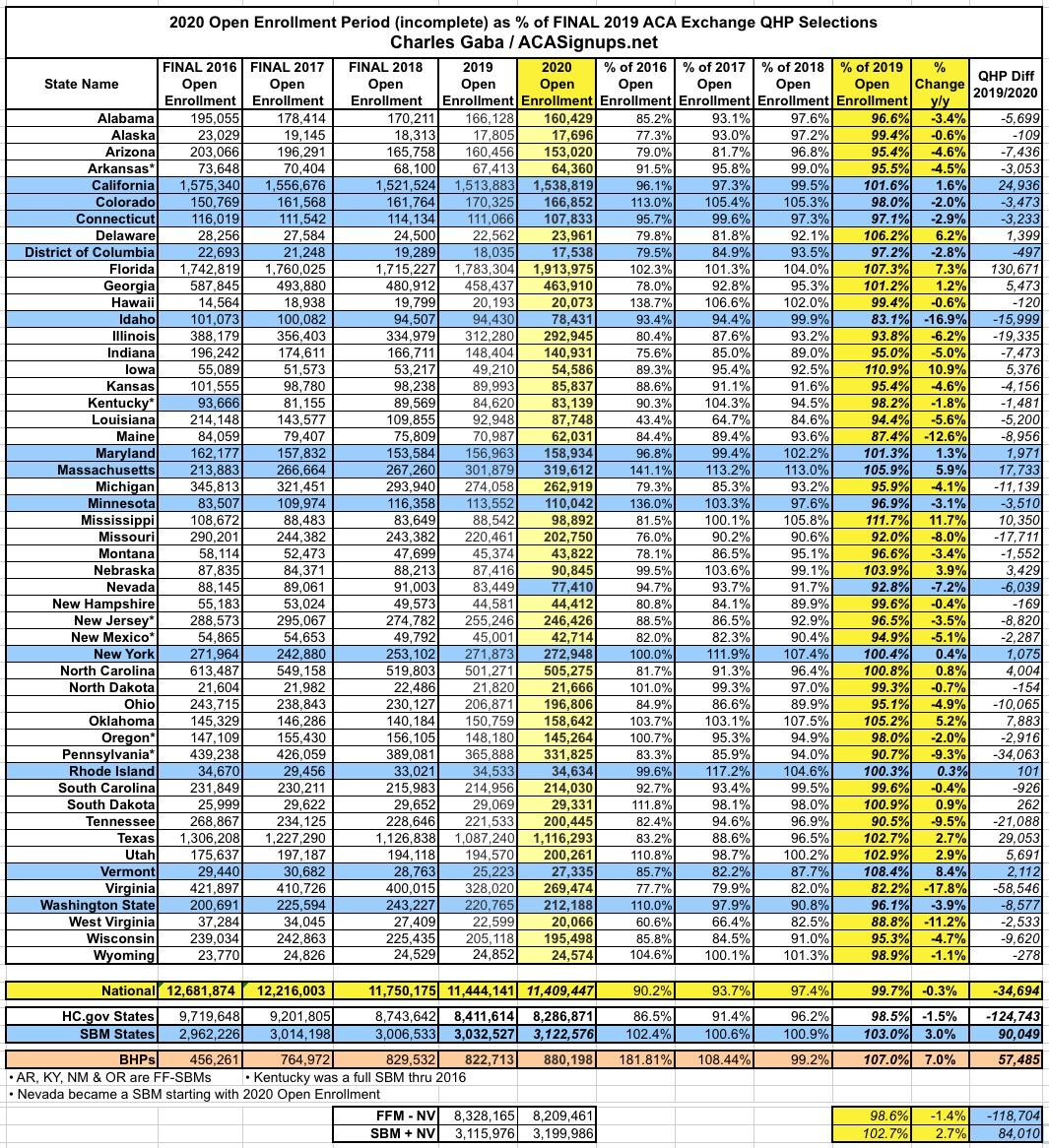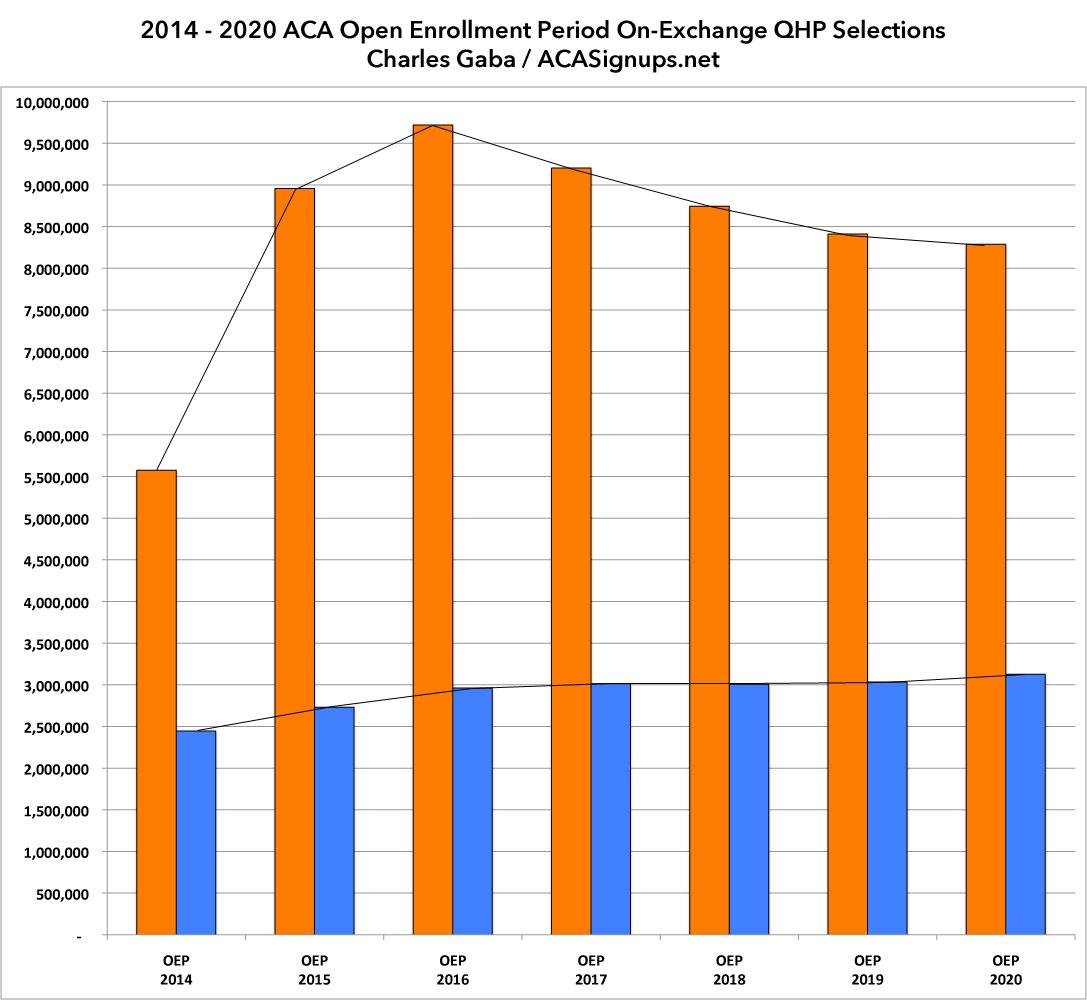Oh yeah...2020 ACA Open Enrollment was only down by 35,000 people this year.
I noted this a couple of weeks ago, but I'm updating this post because the official CMS 2020 Open Enrollment Period report has just been released, so I have final numbers for every state now.
Normally this would be a big, wonky, in-depth analysis, but I'm gonna keep it relatively basic this year for two reasons: First, because the final numbers are only slightly different from what I had them at already (seriously, I was only off by around 5,300 enrollees out of over 11.4 million total); second, because with the COVID-19 pandemic having killed well over 5,000 Americans already with no end in sight, I'm not sure anyone really gives a crap at the moment.
In fact, even the CMS report is pretty bare-bones this year...unless this is just a preliminary version with a more formal press release to come soon. The accompanying Public Use Files also seem rushed, with the column headers in data mode instead of reader-friendly English. Again, this isn't exactly a high priority for the folks at CMS at the moment I'm sure, so I'll take what I can get.
Anyway, I figured I should take a moment to note the continuing trendline between the Federally Facilitated Marketplace (FFM) (HealthCare.Gov) and the State-based Marketplaces (SBMs). There have been as many as 15 or as few as 12 depending on the year.
The first table below lists the official number of Qualified Health Plans which were selected by Americans during the official Open Enrollment Periods for the first seven years they've occured. The blue cells represent states which operated their own full SBMs that year. This has changed over the years as follows:
- Hawaii was an SBM in OEPs 2014 & 2015; it's been part of the federal exchange since OEP 2016.
- Idaho was on the federal exchange in OEP 2014 only; it's been a full SBM since OEP 2015.
- Kentucky was an SBM in OEPs 2014 - 2016; it's been hosted by the federal exchange since OEP 2017.
- Nevada was an SBM in OEP 2014, then switched to the federal exchange for OEPs 2015 - 2019 before switching back to a SBM for OEP 2020.
- Oregon was an SBM in OEP 2014; it's been hosted by the federal exchange since OEP 2015.
As you can see, while total enrollment is almost identical to last year (just over 11.4 million nationally), there's a wide variance between some states. Overall, enrollment in HelthCare.Gov states is down about 1.5% (125,000 people) while it's up 3.0% in the state-based exchanges (90,000 people). However, This has to be adjusted due to Nevada shifting from the former to the latter status.
If you count Nevada as a state-based exchange both years, the numbers are closer...but not by much, since Nevada is a small state to begin with: HC.gov is down 1.4%, the SBEs are up 2.7% year over year.
Due to the above-noted shifting of states between FFM and SBM status, the chart below isn't perfectly representative, but even after correcting for these shifts, the trend is unmistakable: Whle FFM enrollment surged in 2015 and 2016 under the Obama Administration, it has gradually dropped off each year since under the Trump Administration...while enrollment in SBM states has gradually increased each and every year for six years straight:
The only "state shift" which has occured since OEP 2016 is Nevada splitting off of HealthCare.Gov onto their own exchange this year, and again, even that only made a nominal difference.
Assuming the ACA survives the Texas vs. Azar lawsuit into 2021, three more states plan on following Nevada's lead and splitting off of the federal exchange onto their own this fall: New Jersey, New Mexico and Pennsylvania. Collectively, these three states represent around 5.4% of all ACA exchange enrollees.
I'll have more to say about the 2020 CMS Open Enrollment Period report tomorrow, but I'll leave it at that for tonight.





